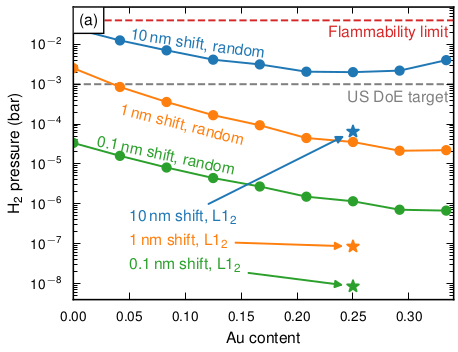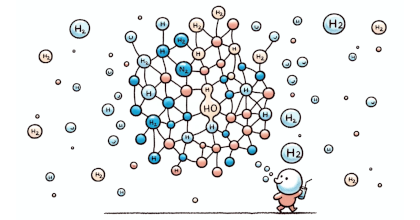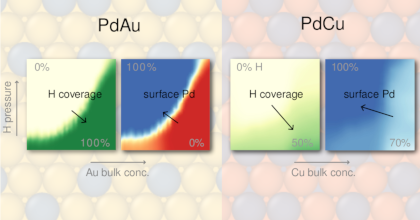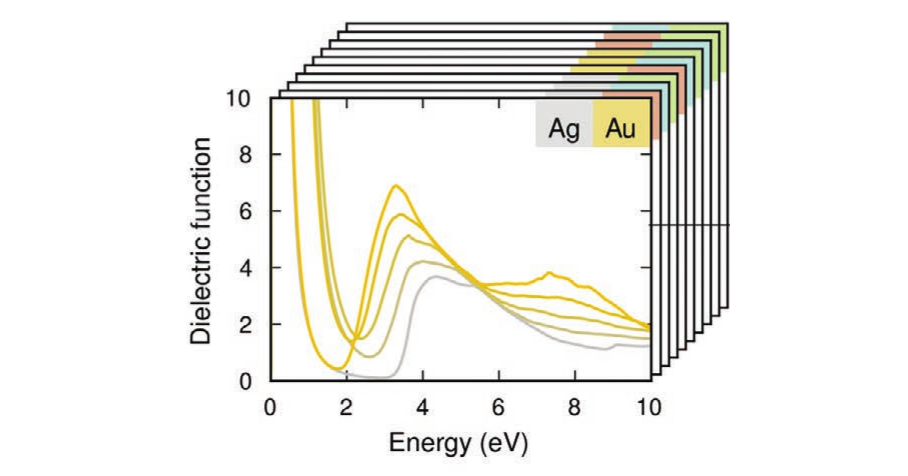Computational Design of Alloy Nanostructures for Optical Sensing of Hydrogen
P. Ekborg-Tanner,
J. M. Rahm,
V. Rosendal,
M. Bancerek,
T. P. Rossi,
T. J. Antosiewicz,
and
P. Erhart
ACS Applied Nano Materials 5, 10225
(2022)
arXiv:2204.06229
doi: 10.1021/acsanm.2c01189
Download PDF

Pd nanoalloys show great potential as hysteresis-free, reliable hydrogen sensors. Here, a multi-scale modeling approach is employed to determine optimal conditions for optical hydrogen sensing using the Pd-Au-H system. Changes in hydrogen pressure translate to changes in hydrogen content and eventually the optical spectrum. At the single particle level, the shift of the plasmon peak position with hydrogen concentration (i.e., the “optical” sensitivity) is approximately constant at 180 nm/c_H for nanodisk diameters ⪆ 100 nm. For smaller particles, the optical sensitivity is negative and increases with decreasing diameter, due to the emergence of a second peak originating from coupling between a localized surface plasmon and interband transitions. In addition to tracking peak position, the onset of extinction as well as extinction at fixed wavelengths is considered. We carefully compare the simulation results with experimental data and assess the potential sources for discrepancies. Invariably, the results suggest that there is an upper bound for the optical sensitivity that cannot be overcome by engineering composition and/or geometry. While the alloy composition has a limited impact on optical sensitivity, it can strongly affect H uptake and consequently the “thermodynamic” sensitivity and the detection limit. Here, it is shown how the latter can be improved by compositional engineering and even substantially enhanced via the formation of an ordered phase that can be synthesized at higher hydrogen partial pressures.



